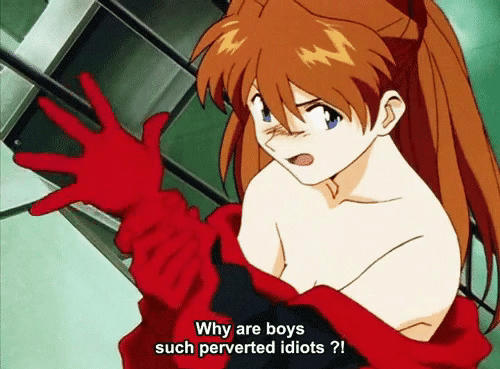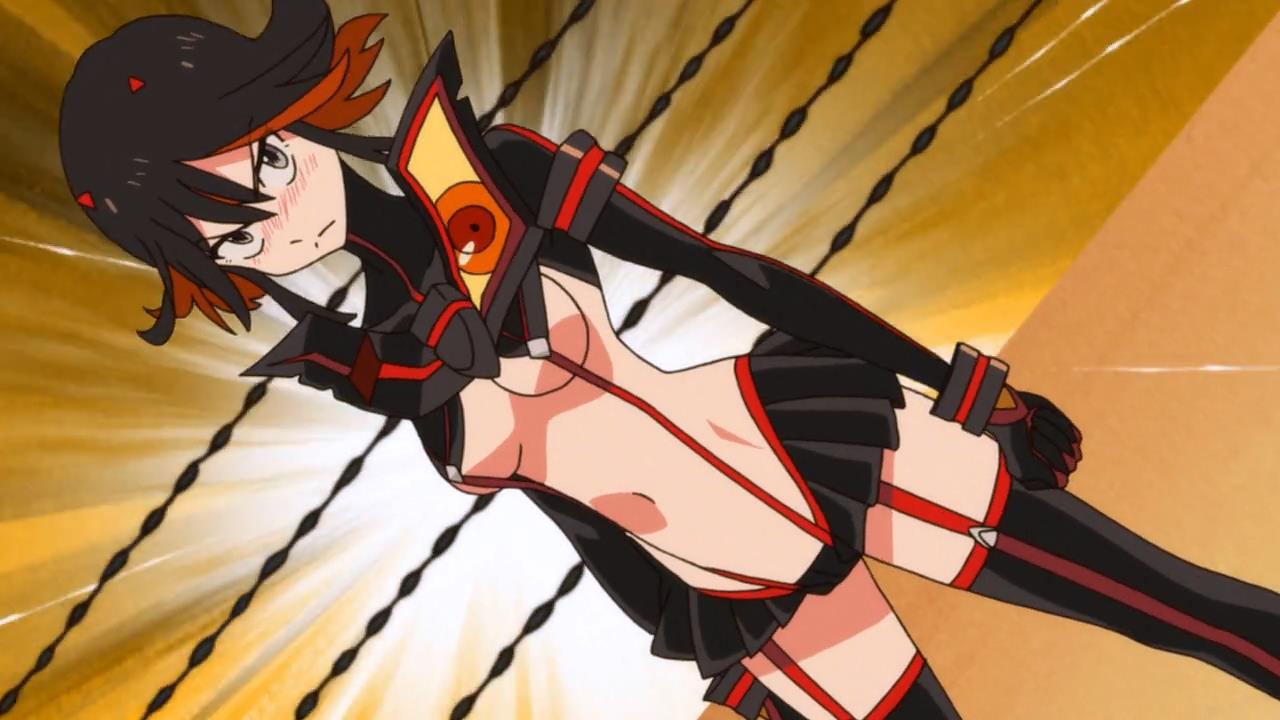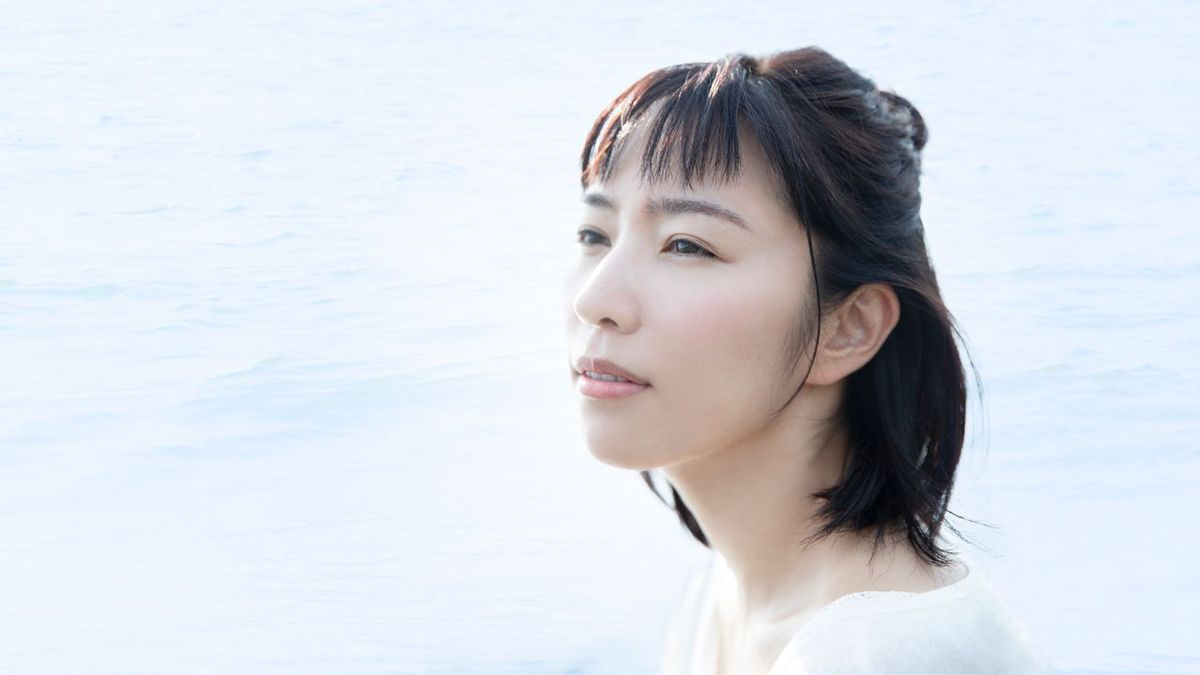
Anime girls are horny because they are written by men who want to fulfill male fantasies. /EndTopic. See references below.
Nah, there’s a lot more to the true answer, but the above statement is also one of the answers.
Views on female sexuality has shifted across cultures and time periods. Many researchers view the suppression of female sexuality as a result of multiple reasons. The methods used to suppress women depends on which reason dominates the culture and time period: genital mutilation, veneration of virginity, abstinence-only sex education (in the modern period), and requiring women to hide their skin (Kellie, 2020). The reasons behind this suppression falls into three categories:
- Societal cohesion
- Patriarchal power
- Evolution
Some researchers argue that the cultural suppression of female sexuality lends to societal cohesion by stabilizing households as the base of society. Japan held this view, particularly during the Meiji period.
Mary Jane Sherfey argued that the cultural suppression of sexual promiscuity, and particularly female sexuality, was an essential step toward cooperative living in large-scale societies: “primitive woman’s sexual drive was too strong…to withstand the disciplined requirements of a settled family life—where many living children were necessary to a family’s well-being and where paternity had become as important as maternity in maintaining family and property cohesion” (Kellie, 2020)
The strong female sex drive plays into how anime and manga view women, and this view was also common in the West up until the Victorian era, where the idea shifted toward men having the stronger sex drive (Groneman, 1994; Studd, 2007). I will spend more time on this later.
Patriarchal power is one of the most common arguments for female sexual suppression. As Kellie (2020) writes: “Suppressing female, but not male, sexuality frees men up to pursue a variety of sexual opportunities and roles while limiting women to a narrower range of social roles.” It reinforces the power of male elites. This argument, however, often ignores the fact that lower-class men also suffer under such a power structure: they are the ones who fight and die in wars and are otherwise treated as expendable, but I digress.

The evolution category argues that because women carried the risk of children and all the biological costs pregnancy and childbirth have, women suppressed their own sex drives to reduce these costs. “Sexual economics” describes how women police each other’s sexual behavior:
[Where] consensual heterosexual sex is a female-controlled resource (that men want) subject to social exchange for resources that men control (and women want). In areas where women are scarce relative to men (i.e., male-biased sex ratio), the greater demand for female partners provides women greater ability to determine the “price” of sex in a sexual exchange, which can increase men’s willingness for long-term commitment and paternal care. Thus, the relative scarcity of women who are available and willing to have sex imbues female consent with value, and the greater the scarcity, the higher the value for females of the exchange. Women, then, benefit from the high prices for sexual exchange, and thus they seek to restrict not only how much sex other women are having, but also the outside perceptions of how much sex other women are having. (Kellie, 2020)
Across cultures and time periods, the influence of these three categories mixed and varied. During Europe’s medieval period, for example, female sexuality was feared because it was deemed insatiable–similar to how anime girls are portrayed (Studd, 2007). The Taoist text, The Ishimpo portrayed female sexuality as “passionate, ecstatically orgasmic, loud. and wet” (Perper, 2002). Japan, too, has a similar thread running through its history. As Perper (2002) points out:
Japan has retained from its earliest days beliefs in the naturalness of sexuality and in the power of women. It is this background that provides the unspoken underpinnings of modern manga.
In Shinto mythology, sexuality was associated with fertility and prosperity (Tan, 2020). The modern idea that women had lower sex drives than men is just another swing on the historical pendulum. In the West, throughout the medieval period, women were seen as more sexual than men. By the Victorian period, the old view of female sexuality was seen as a mental disorder. “Excessive” sexual desire, which was once considered a normal amount, was classified as a disease with the rise of psychiatry. This desire, labeled as nymphomania, was seen as a symptom, a cause, and a disease. It underpinned anxiety, depression, and a long list of other mental struggles (Groneman, 1994). Breaking societal rules about female modesty was also a result of nymphomania. As for who the “disease” infected (Groneman, 1994):
One doctor claimed that women with blond hair between the ages of sixteen and twenty-five were the most likely candidates, while others saw it as a disease of widows, virgins, or pubescent adolescents.
Doctors treated nymphomania–and all its other related disorders–using leeches applied to the vulva and by removing ovaries, labia, and the clitoris. X-rays were even used to destroy the clitoris (Studd, 2007). While rarer, castration was also used to treat mental disorders in men. The rarity of this treatment, against that of women, shows the double standard of sexuality during the Victorian period.
As Japan opened to the West, these ideas also entered. In the early 1900s, Western loanwords increased in use in Japan along with the ideas behind them, such as homosexual, heterosexual, love letter, lesbian, and many others. The Victorian ideas that continued to influence psychology also drifted into Japan (Robertson, 1999). As the ideals of Imperial Japan took hold, Japanese women were expected to fall into the Good Wife, Wise Mother idea. Robertson (1999) summarizes this well:
For many critics, moral depravity accompanying the growth of the modernizing (or Westernizing) city seemed to be the only viable explanation for ome or butch-fem relationships among bourgeois urban women, at least until the advent of all-female revues, whose men’s role players inspired new ideas to account for the increasingly visible masculinized female. Whereas the Japanese Good Wife, Wise Mother was praised by conservatives as the embodiment of social stability and cultural integrity, her alter ego, the Western Masculinized Female–and New Woman in general–was perceived as the embodiment of social instability.
During this period, Japan doubled down on the idea that suppressing female sexuality led to societal cohesion. The New Woman, who we in the US called flappers, represented a threat to that view. New Women were “an indulgent and irresponsible young Japanese woman who used her overdeveloped sexuality to undermine the family and to manipulate others for her own selfish ends” (Robertson, 1999). They become scapegoats and symbols for how Japanese people were not supposed to behave. Despite the distrust for Western media and culture, Imperial Japan, if to a lesser degree, embraced the same perspective of female sexuality as the Victorian West had. In order to push the Good Wife, Wise Mother idea, Japanese newspapers singled out women as a source for social disorder because of their perceived sexual deviance. This cultural suppression also led to some Japanese women policing each other as Imperial Japan encouraged neighbors to spy on each other.

So that brings us to modern manga and anime. Anime girls are hornier than anime guys because the historical pendulum swings back toward the older idea that women are more sexual than men. Imperial Japan’s suppression of female sexuality along with the American Occupation marked the extreme of suppression in the past century. The lid blew off in the 1960s and 1970s. Cultural shifts take a long time to work its way through a culture. The process is driven by generational cohorts aging and dying, which is why swings of the pendulum take decades. Fiction reflects cultural changes and perspectives of the period its created within. Fiction can run counter how a culture works, but in that regard it is still working within the confines of that period. Anime girls are more sexual than anime men because we sit in a male herbivore era–a time when men aren’t pursuing relationships or women–so these fictional girls provide an outlet for pent-up male sexual desires. Anime girls behave similar to women in medieval European stories and old Japanese folktales, reflecting the cycle of history.
As people get tired of overt sexuality, we will see culture shift back toward suppression and modesty. The pendulum already swings that direction with the rise of herbivores, exhaustion with sexualized media, and other indicators. The swing is slow; it won’t complete until, I surmise, my generation–the Millennials–die of old age. The categories of suppression will continue to play a role. From what I see online, the evolution view appears to be the most influential current view, but it will take a few decades to see if this remains true.
Anime girls are horny for other reasons too: female empowerment, comedy, fun, and, as I pointed toward at the start, male fantasies. Fiction folds many unconscious influences into characters and stories. Because we live in certain cultural and historical environments, we often aren’t aware of how they function. The cliche “a fish doesn’t understand water” holds true, even with the fiction we produce and consume. Anime girl horniness–and the lack of male horniness that often contrasts it–taps into one cycle of human understanding that resides below the surface reasons. We like to point toward just one reason why something is so. In the 1800-1900s, nymphomania was pointed toward as the sole, or at the least, main reason behind female psychological struggles. So too people point toward “patriarchy” or “evolution” or “male fantasies” as singular reasons behind what we see in fiction and within culture. Reality, however, has multiple causes which vary in influence over the years. Fiction, in turn, influences the waters we swim within, to stretch the fish analogy.
To add to the complication, anime and manga intertwine not only with Japan’s past but also the West. While Victorian ideas influenced Japan in the 1900s, Japan also influences the West today. Anime and manga contain many Western aspects because they are marketed, at least in part, to the West. This, in turn, has influenced Western cartoons and visual design. Tangling things further, we also see Chinese and Korean influences on anime and manga through tween exporting and the rise of Chinese and Korean anime studios.
In any case, why anime girls are so horny has many different answers. All of the answers are true in varying degrees. The intentions of the author, which I didn’t touch upon here, also lends answers. Some authors see sexuality as empowering. Others will see it as satire and social commentary, such as in Kill la Kill. Still others will see it as living vicariously through their characters.The also consumer decides their own answer.
References
Groneman, Carol (1994) Nymphomania: the historical construction of female sexuality. Journal of Woman in Culture and Society. 19 (21).
Kellie, Dax, et al (2020) Papa don’t preach: using lies to expose the truth about who suppresses female sexuality. Human Nature 31:222-248.
Perper, T., Cornog, M. (2002) Eroticism for the masses: Japanese manga comics and their assimilation into the U.S.. Sex Cult 6, 3–126.
Robertson, Jennifer (1999) Dying to tell: sexuality and suicide in Imperial Japan. Signs: Journal of Women in Culture and Society 25 (1).
Studd, John (2007) A comparison of 19th century and current attitudes of female sexuality. Gynecological Endocrinology. 23 (12): 673-681.
Tan, Daniela (2020) The body as place in time: concepts of the female body in medieval Japan. Kronoscope 20.




I feel that this question of “horny anime girls” grafts onto harem anime in an interesting way. Two images you shared–Konosuba and Oreimo–are from anime featuring multiple women with varying levels of sexual interest in the male protagonist. Darkness and Kirino are “hornier” than other girls in their respective shows; having options for the protagonist allows the pendulum of “horniness” to explore a rather wide arc.
I imagine the difference between older and newer harems are where generational changes in modesty become prominent.
I’m glad you caught that! I used the images of Darkness and Kirino to illustrate that point exactly. I find the historical perspective on women (and indirectly on men) fascinating with how it becomes an unconscious way we consider reality and fiction.